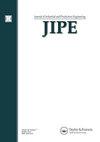钛合金加工时刀具路径策略对表面粗糙度的影响
IF 4.6
Q2 ENGINEERING, INDUSTRIAL
引用次数: 0
摘要
本文对钛合金等难切削材料的精加工刀具路径策略进行了比较和评价。钛合金在石油和天然气、航空航天、能源、医疗和汽车等行业的高性能应用中得到越来越多的应用。铣削策略的重要性从其对生产经济方面的影响出发,通过数控机床实现。为了实验的目的,设计了一个平面样品,实现了对异形表面的精加工刀具路径策略。对螺旋、定Z和直线进给三种切削策略进行了比较。为了评估切削策略的效果,采用了三种不同的进给速度。对模拟的刀具路径策略与加工表面进行了目视检测,并对实测表面粗糙度进行了评价。从表面粗糙度的角度出发,确定了恒Z形切削路径策略是合适的切削策略。本文章由计算机程序翻译,如有差异,请以英文原文为准。
THE EFFECT OF CUTTER PATH STRATEGIES ON SURFACE ROUGHNESS WHEN MACHINING TITANIUM ALLOY
The article deals with the comparison and evaluation of finishing cutter path strategies when applied to one of the difficult to cut material such as Ti-alloy. The titanium alloy has been increasingly used for high performance application for oil and gas, aerospace, energy, medical and automotive industries. The importance of milling strategies outgoing from their impact on the economic aspects of production, realized using CNC machines. A planar sample was designed for the purposes of the experiment, enabling finishing cutter path strategies for shaped surfaces. Three cutting strategies were involved and compared- spiral, constant Z and line feed. For assessment of the effect of the cutting strategies three different feed rate were used. Comparison of simulated cutter path strategies and machined surface were visually inspected as well as measured surface roughness were evaluated. The constant Z cutting path strategy was found as suitable cutting strategy from point of view of surface roughness.
求助全文
通过发布文献求助,成功后即可免费获取论文全文。
去求助
来源期刊

Journal of Industrial and Production Engineering
ENGINEERING, INDUSTRIAL-
CiteScore
7.50
自引率
6.70%
发文量
21
 求助内容:
求助内容: 应助结果提醒方式:
应助结果提醒方式:


